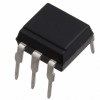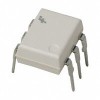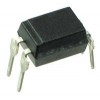Shopping Cart
0 item(s) - R0.00-
- - Amplifier Module
- - Arduino Compatible - Development Platform
- - Arduino Compatible Modules & Shields
- - Breakout Boards
- - Cables / Hookup wires
- - Displays
- - Enclosures
- - Magnets
- - Motors & Gears
- - Nuts & Bolts
- - Peltier Cooler Heater
- - PIR
- - Sensors
- - Servo's & Motors
- - Solar
- - Stand Alone Modules
- - Stepper Motor & Drivers
- - USB Programmers & Converters
- - Voltage Regulator & Chargers
- - RC Hobby Parts
-
- - AC DC Cooling Fans
- - Cable Ties
- - Day/Night Switches
- - Electrical Plugs & Connectors
- - Gate Remotes & Receivers (Universal)
- - Heat Shrink Sleeves
- - Insulation Tape
- - Lighting & Globes
- - Mains Power Cables
- - Power Supplies & AC/DC Adaptors
- - Security Lights LED Type
- - Solar Charge Controllers
- - Surge Protectors
- - Timers
-
- - Battery Holders
- - Breadboard
- - Bridge Rectifier
- - Buzzers
- - Capacitors
- - Crystals
- - Diodes
- - Electromechanical
- - Fuses
- - Headers
- - Heat Sinks
- - IC Sockets HQ
- - IC Sockets TIN
- - IC's --> Semiconductor
- - Inductors
- - Laser Units (CD Players)
- - Microcontrollers & CPU's
- - Opto Electronics
- - Panel Meters And Displays
- - Passive Components
- - Pilot Lamps & Fittings
- - Plugs & Sockets
- - Resistors
- - Rotary Potentiometer
- - Semiconductors
- - Sensors
- - Switches
- - Transformers
- - TVS Diodes
- - Veroboard / Stripboard
- - Voltage Regulators
- - Zener Diode
Optoisolator

An optoisolator (also known as optical coupler, optocoupler and opto-isolator) is a semiconductor device that uses a short optical transmission path to transfer an electrical signal between circuits or elements of a circuit, while keeping them electrically isolated from each other.
These components are used in a wide variety of communications, control and monitoring systems that use light to prevent electrical high voltage from affecting a lower power system receiving a signal.
Optoisolators are available in a multitude of package styles including rectangles, cylinders, and specialty configurations. These package types are designed to provide higher isolation voltages than what can be achieved with DIP and SMD packages.
While using the optoisolator, the designer may need to take into consideration the environmental conditions. For example, percentage of humidity in the environment would be a key consideration if the system requires 50,000 V of dc isolation.
If the humidity in the air is too high, an arc may occur around the optoisolator or along the surface of the PCB, resulting in a conductive path and shorting around the device. Distance, temperature, barometric pressure, type, and amount of contaminate in the air, as well as humidity, define the breakdown potential exterior to the optoisolator.
Ex Vat: R9.13
Ex Vat: R12.61
Ex Vat: R7.39
Ex Vat: R22.17
Ex Vat: R3.04










-80x80.jpg)















